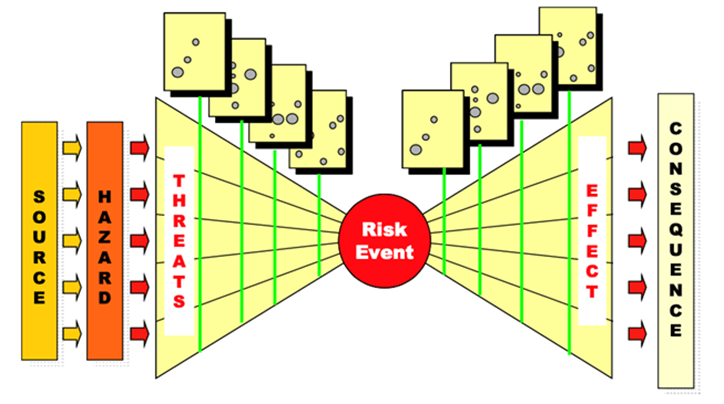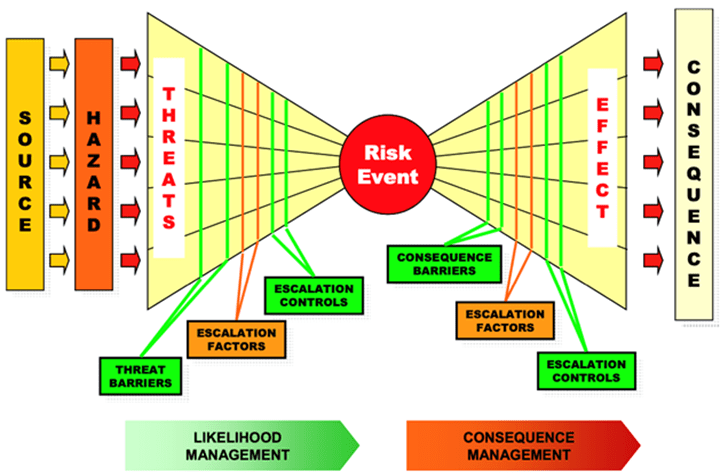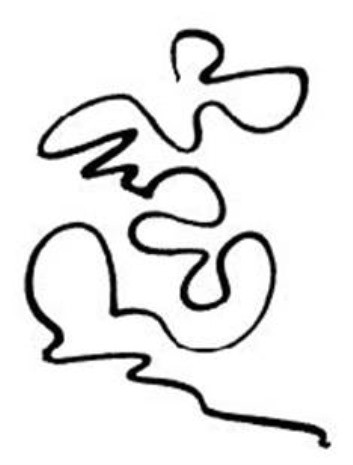Bow-Tie BS
The Bow-Tie has been celebrated for years in risk and safety as if it is a good model for risk analysis. Nothing could be further from reality. I couldn’t think of a worse model for understanding risk, causality or the emergence of events.
The BowTie was developed out of the chemistry industry and its origin is often attributed to the University of Queensland in 1979. However, it seems to have emerged from other preceding mechanistic models of hazard analysis such as: ‘fault tree’ thinking, ‘swiss cheese’ causality and ‘damaging energy’ mythology. All these models, semiotics and discourse have nothing to say about the fallibility of persons (https://www.humandymensions.com/product/fallibility-risk-living-uncertainty/ ) or systems. Indeed, none of the discourse associated with any of these models has anything to say about the nature of persons, an ethic of risk or uses person-centric language. Similarly, the Discourse of ‘drift into failure’ doesn’t serve us well when considering human judgment and decision making in risk.
For the moment, let’s just have a look at the Bow-Tie model.
The Bow-Tie serves as a metaphor determined by the shape of the model. The most comprehensive explanation of the Bow-Tie Model is given by Talbot and Jakeman in The Security Risk Management Body of Knowledge (SRMBoK). You will even see in this model the Bow Tie placed over Reason’s model of Swiss Cheese. See Figure 1. Bow Tie and Swiss Cheese (p.59. SRMBoK)
Figure 1. Bow-Tie and Swiss Cheese
The Bow-Tie Model seeks to explain the nature of events in a linear model of attenuated and amplified events. Its primary focus is on hazards as if humans are NOT a part of unfolding events. If you have a look at Figure 2. Bow-Tie Model, you will see the focus is on hazards, barriers, factors and controls. The notion of ‘source’ is neither defined nor explained.
Figure 2. Bow-Tie Model
If you read the SRMBoK you will realise that human persons play no part in the way risk is explained. The strange thing is that the so called ‘source’ is never defined, there is no discussion of persons, personhood or starting points. Similarly, the notion of ‘fallibility’ gets no mention in the model either of systems or persons. Similarly, there is no ‘drift into failure’. From what? From what state of being do events emerge? Similarly, there is no mention of an ethic of risk nor any discussion of what the Bow-Tie model assumes of persons, systems, decision making, human judgment or human enactment.
Of course, the Bow-Tie is not just a model of causation and risk but also a semiotic that seeks to explain the unfolding of events as ordered, mechanical, understandable, logical and rational.
Events do not emerge in this way. Such metaphors as Swiss Cheese and Bow Tie have more in common with BS than reality.
The Bow-Tie is a model of systemic order placed over the real and messy reality of how events emerge and how human persons tackle risk. The reality of life is, the emergence of events as most often: messy, involving many unconscious factors, many hidden human elements, as chaotic and non-systemic. Real life is more like a matted rhizome (https://safetyrisk.net/the-rhizome-as-a-learning-model-for-risk/ ) than an ordered Bow-Tie. The Bow-Tie as a semiotic conveys the idea that events occur as an ‘in and out’ process. Such a model lends itself well to the assumptions of behaviourism (https://safetyrisk.net/the-curse-of-behaviourism/ ) but in no way reflects reality.
You could just as easily think of life-living as a meandering line of twists and turns often created by the emergence of unforeseen social events. One could equally use the metaphor of a river to imagine and symbolise the twists and turns of life events as it winds its way between the pressures and forces of the terrain that shape it. This can be represented as a wiggling line eg. See Figure 3. Wiggle Line.
Figure 3. Wiggle Line.
What Safety does with the Bow-Tie, Swiss Cheese or any other linear model of causation is place a framework over that line in order to deconstruct it, control it and turn it from a messy reality into an ordered reality. See Figure 4. Ordered Framework.
Figure 4. Ordered Framework.
The Bow-Tie, Swiss Cheese and Damaging Energy models are simply symbolic models placed over reality in order to control it and give off the idea that everything is controllable, ordered and systemic.
Once a metaphor-as-model is symbolized, it makes the myth it embodies into a symbol of power, constructing a level of acceptability and orthodoxy through the symbol as if it resembles reality, when it doesn’t. What these models most often hide is an undisclosed philosophical ethic about persons and risk. These assumptions are never discussed. What all of these models ignore is the question about starting points. What is the status and being of the person before they engage (engaged in risk) with a hazard?
The Bow-Tie, Swiss Cheese or any of the mechanistic-behaviourist models in Safety adore the myths-symbols that suit its assumptions and purpose. Everything is under control, you were perfect once, and if you follow this model, we’ll get you to Zero once again.
The truth is, life is disorderly, messy, non-predictable and messy. The Bow-Tie is just a constructed model placed over reality and as such does a very poor job of being helpful for anything.
The reality is, there is no ‘drift’ into failure, there is no in and out in causality, there is no swiss-cheese reality. Humans and systems don’t achieve perfection nor ‘start’ from it and then fall away. Human persons and systems are always fallible, vulnerable and never perfect. There is no zero.
Once one gets silly Safety constructs out of the way and embraces risk as a ‘wicked problem’ (https://safetyrisk.net/risk-and-safety-as-a-wicked-problem/ ), then that focus can move away from zero (https://safetyrisk.net/moving-away-from-zero-so-that-safety-improves/ ), numbers and constructs of control to a focus on learning and resilience, living with risk as if it is not the enemy. This is why Risk Makes Sense (https://www.humandymensions.com/product/risk-makes-sense/ ).







Neil McNaughton says
I cannot claim to have any in-depth knowledge of risk. But it always seemed to me that the “bow tie” method was a bit peculiar. So I googled ‘bow tie risk bullshit’ and you came up N° 1. Good stuff. My own 2cents… Checkout some of the videos on the Chemical Safety Board website csb.gov. I bet these plants had some cheesy risk analysis done at some time or other. Then look at the old rust buckets of plant and reflect…
Admin says
Thanks Neil – quite an honour! We do like to challenge the safety BS that has been promulgated in the workplace and our lives as well. I’ll let dr rob respond on the detail
Steve says
Great article Rob! My organisation uses the Bow Tie with excitement and vigour, totally consumed in it as the go-to methodology for risk management…..
Rob Long says
Yes Steve, so many of these models are put forward with so little consideration of people, social influences, culture and a host of critical factors in risk. The reason Safety loves them so much is because they are brutal and focused on objects. Then the deify models and worship them as if they were ordained from on high. Much like iCam, which is s woeful form of investigation.
Rose says
Rob, what a relief it is to read your critique of Bow tie and iCam.
Have thought exactly the same for some time. These two methods are held up as gold standard by many involved in health and safety and to express doubt as to their usefulness is heresy! It is dispiriting.
Rob Long says
Thanks Rose. So many of the forms and processes created by Safety are simply appalling but adored by an industry that is yet to learn that risk is all about people not objects. But there you go, so many people are happy with rubbish just as long as it is signed and they think it covers their arse, which of course it doesn’t, but that’s the safety delusion.